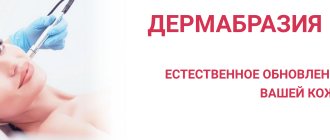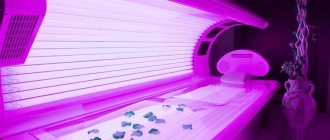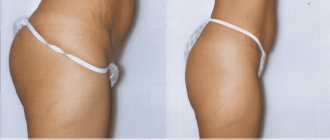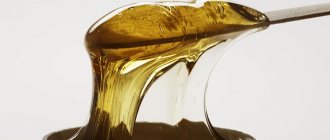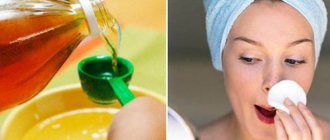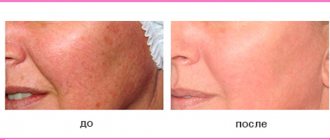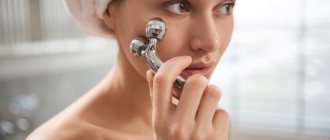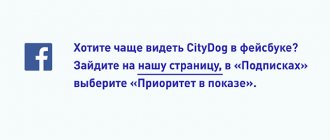Dermabrasion is a method of resurfacing facial skin to eliminate cosmetic defects. The procedure is carried out using a special device that affects the papillary layer and epidermis. By removing the superficial layers of the dermis and preserving the deep ones, rapid tissue restoration occurs, metabolic processes in the skin are activated, and a long-lasting lifting effect is ensured.
There are several types of dermabrasion depending on the devices used and the depth of exposure. Mechanical dermabrasion provides the deepest cleansing thanks to the use of attachments made from milling materials, laser dermabrasion affects the upper layer of the skin using a laser beam, and diamond dermabrasion uses small diamond particles. Microdermabrasion is a gentle resurfacing procedure that does not require anesthesia, in which a stream of microcrystals is applied to the skin.
What is Diamond Dermabrasion?
The diamond resurfacing method involves gentle exfoliation of dead skin cells, affecting the surface layer of the epidermis. Already after the first procedure, the process of oxygen circulation is normalized, the natural production of elastin and collagen is launched, turgor and elasticity increase, and fine wrinkles are smoothed out.
Unlike laser or mechanical skin resurfacing, the method has a weak abrasive effect. The smallest diamond particles act carefully, without causing pain, irritation, redness, bruising and other negative consequences. Microdermabrasion can be performed alone or in combination with other procedures.
Indications for dermabrasion
Microdermabrasion is prescribed to the patient after diagnosis, the number of sessions is determined individually.
Indications for diamond peeling:
- shallow wrinkles;
- scarring;
- scars;
- post-acne;
- comedones;
- traces of rashes;
- dull skin color;
- peeling;
- dark spots.
Diamond dermabrasion is prescribed in a course. To achieve a noticeable and lasting effect, 4-8 sessions are required, the duration of one procedure is about 20 minutes. The specialist can reduce or increase the time based on the condition of your skin and reaction to the procedure.
History of origin
For the first time such a procedure – mechanical – appeared in 1949. Then a doctor from Germany named Schreuss started talking about the possibility of using special drills with perfect accuracy and increased rotation speed.
Schumann took up the development of the device - he created a small motor under the Diros brand, which was capable of producing the required number of revolutions. This is how the world's first skin resurfacing tool called Schuman Schreus appeared.
For more than thirty years, the device was almost the only way to remove:
- tattoos;
- scarring;
- dark spots.
However, it was not suitable for skin rejuvenation (especially on the face) for several reasons:
- increased pain;
- the likelihood of infection getting into the blood;
- long recovery period.
Cosmetologists and doctors continued to search for perfect methods. As a result of numerous studies, new devices were created that made it possible to universally introduce such a service as hardware dermabrasion. In addition, effective anesthesia and drugs for restoring the epidermis have appeared.
How is facial dermabrasion performed?
Light facial peeling is performed with a special device using a nozzle with a rough diamond coating. The master strictly controls the intensity of the impact, the force of pressure, preventing excessive abrasive effect and too deep damage to the epithelium. The nozzle is in contact with the skin, providing soft and painless removal of dead tissue.
For regular maintenance, not too coarse nozzles are used. The direction of movement of the device is not of fundamental importance; what is important is the exposure time and the correct pause between procedures. Dermabrasion lasts about 20 minutes; at the end of the session, the master applies products that soothe the skin of the face, or begins further procedures planned as part of the complex.
Laser resurfacing in the treatment of scars
One of the most difficult problems in plastic surgery and cosmetology is the treatment of keloid scars
. Today it is known that the tendency to their formation is dictated by heredity - more than 30 factors have been identified that influence their formation. However, the skin's tendency to form rough scars cannot be predicted in advance. There are also no tests that identify this tendency.
Therefore, preventing their appearance is impossible, and cosmetologists and surgeons have to solve the problem with scars that have already arisen. In addition to keloid scars, there are hypertrophic
. They increase to a certain size, then they become flattened. After 6-12 months, the scars fade.
A keloid is characterized by a tendency toward constant growth of connective tissue. This scar is larger than a cut in the skin. Therefore, for effective treatment, correct diagnosis of scars and correct implementation of the laser scar resurfacing procedure are of great importance.
Advantages of laser skin resurfacing compared to other methods:
To “even out” the skin structure, the following are also used:
— Chemical peels.
By adjusting the concentration of the chemical in the peeling composition, you can achieve an effect on the superficial, middle and deep layers of the skin. Superficial peels are ineffective and severely damage the top layer of skin, leading to peeling. Deep peels are dangerous due to the inability to control the depth of penetration of the chemical. Due to the aggressiveness of their effect on the skin, their use in cosmetology is prohibited in some European countries.
— Mechanical dermabrasion.
Today this is one of the most well-known methods; it involves influencing the affected area using a special medical cutter. The minimum penetration depth is 20 microns, so mechanical dermabrasion is not used in areas of complex terrain and thin skin, for example on the eyelids. Dermabrasion is a surgical procedure performed under anesthesia. A crust and erythema remain on the face for 14 days for up to 6 months. Throughout the year, a demarcation line may remain between the areas of skin that have undergone dermabrasion and healthy areas.
— Cryodestruction.
The main disadvantage of the method is the impossibility of its complete control. Since liquid nitrogen is used for the procedure, it is impossible to 100% predict the depth of its penetration into the tissue. Among other things, the procedure is quite traumatic and there is a high risk of scarring. The effect of the procedure is also not guaranteed; the indications for which it is performed are very limited.
The use of any of the above methods is accompanied by the risk of serious complications. Therefore, laser resurfacing of post-acne scars is the safest and most effective method of dealing with scars.
What are the contraindications?
Despite the fact that dermabrasion only interacts with the superficial layer of the dermis without causing significant damage, the procedure has a number of contraindications that must be taken into account.
When not to do diamond peeling:
- dermatological diseases in the acute stage;
- keloid scars;
- diabetes;
- oncology;
- pregnancy;
- breastfeeding period.
It is also prohibited to resort to microdermabrasion if there is a blood clotting disorder or individual intolerance to the smallest particles applied to the nozzle.
The essence of the method
So, dermabrasion (from Latin derma + abrasio
) translated means “scraping the skin.” This is a cosmetic procedure aimed at removing the upper layers of the epidermis, and sometimes the upper part of the papillary dermis, resulting in epithelialization (the formation of epithelium* at the site of skin damage).
Thus, thanks to the dermabrasion procedure, tissue regeneration processes are stimulated, as a result of which young and healthy cells take the place of old and damaged cells. In such young cells, metabolism occurs more intensively, as a result of which the lack of collagen fibers in the skin is compensated, it becomes softer and more elastic.
How is dermabrasion performed at the WOSK salon?
We provide gentle facial peeling in a comfortable beauty salon. At the initial consultation, a specialist will conduct a thorough examination, identify problems, find out how you care for your skin, what procedures you do, and what effect you want to achieve. Based on the examination results, the cosmetologist selects a nozzle, the degree of abrasiveness, and determines the depth of cleansing.
Since microdermabrasion only affects the superficial layer of the face, the patient does not experience pain. A slight tingling sensation may be felt during the session. If you have a low pain threshold or hypersensitive facial skin, the specialist will offer local anesthesia.
Post-procedure care
Microdermabrasion is not accompanied by a recovery period. However, we are talking about a violation of the skin, albeit minor. There are a number of rules that must be followed:
- Regardless of the time of year, avoid direct sunlight.
- Half an hour before going outside, apply sunscreen with a high SPF value to your face.
- Avoid visiting the pool, sauna, bathhouse, and swimming in open water for 5-7 days.
- It is recommended to reduce the intensity of physical activity to minimize sweating.
- At first, wash your face with warm water so as not to irritate the damaged dermis.
- Use cosmetic products that the specialist will recommend to you at the end of the session.
- Avoid aggressive cosmetics that contain alcohol and acids.
- Do not use decorative cosmetics - foundation, blush, compact and mineral powder.
You can make an appointment at the VOSK salon and find out prices by phone, during a personal visit or on the website. Online registration gives you the opportunity to receive a 15% discount on any procedure in one of our salons in Moscow.
Hardware dermabrasion. Briefly about each of the 5 types
Let us briefly consider each of the five specified types of procedures.
Mechanical
In this case, mechanical action is implied using brushes or a cutter:
- nylon brushes are designed for surface grinding, eliminating or correcting small wrinkles;
- cutters are used when there are pronounced wrinkles, various scars, pigmentary and vascular manifestations.
After mechanical hardware dermabrasion has been performed, the cosmetologist can prescribe various medications to the client, including:
- vitamin complexes;
- painkillers;
- calming.
By the way!
If treatment was intended in the oral area, additional medications are prescribed to prevent herpes.
However, this type of service is practically not provided in salons due to its complexity and pain.
Microcrystalline
It was created and implemented in the eighties of the last century by Italian specialists O. Ginebri. Its essence is as follows:
- The device attachment is placed on the skin;
- in the nozzle – 2 holes;
- through one, air with microcrystalline particles is supplied;
- in the second, a vacuum is formed;
- microcrystals crash into skin cells at high speed;
- and the vacuum sucks up the separated particles.
Today, this type of hardware dermabrasion is very popular because of its effectiveness. Below is a little more detail about the method.
Gas-liquid
In this case there is no contact with the device. The impact is carried out through a high-speed flow of water and air. The result is achieved thanks to the following features:
- pressure on cells;
- cooling the treated area;
- exposure to microscopic droplets.
Note!
At the same time, lymphatic drainage is carried out and soft tissues are worked out.
During work, the cosmetologist adjusts the distance of the nozzle and its angle of inclination, but the feed speed remains the same.
Hydrodermabrasion
The point is this: when the nozzle is passed over the treated area, particles are exfoliated. They are sucked into the nozzle. At the same time, open pores are cleansed from various impurities and sebum. The special serum ingredients supplied from the nozzle nourish the cells. In addition, vacuum action is carried out, which allows:
- activate microcirculation;
- normalize metabolism;
- increase tone;
- have a tightening effect.
Laser
This involves the use of a laser. It also allows you to cope with various types of neoplasms and scars. The impact is carried out by a large number of emitted photons, formed into a single beam.
